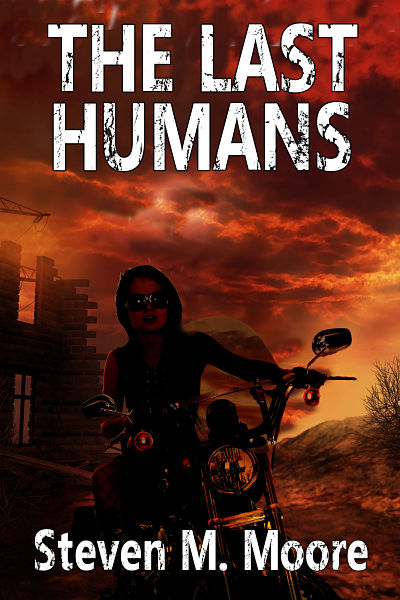Apocalyptic visions…
Huxley had one; in his Brave New World, everyone is happy, happy, happy, taking their soma and not giving a rat’s ass about the futility of their lives. Orwell had one too; in his 1984, no one was happy, even if the entrenched plutocracy ordered them to be, the plutocrats figuring that if they said it often enough they would believe it to be true. C. M. Kornbluth had his too; in Not this August, he painted a desolate land laid to waste by Chinese and Russian invasions. (These are often called dystopian visions, but dystopia is only what follows an apocalypse, even if the latter is only societal.)
By the time I graduated from high school, I read these tales and other apocalyptic visions…the “red menace:” was a part of my childhood. We’d have drills when we’d hide under our student desks so the USSR’s bombs wouldn’t hurt us. While I believed that the USSR could attack us—JFK took us to the brink—I was punished for telling our teacher he was stupid if he thought a small desk could provide adequate protection.
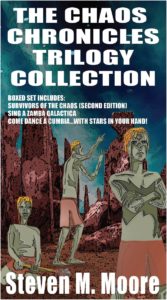
You see, even back then I knew that apocalypses are bigger than any single person; when we say an event is apocalyptic, it affects thousands or millions. Despite that realization, I also realized that the really interesting stories that should be told about apocalyptic events are the ones about how individuals react before, during, and after the event.
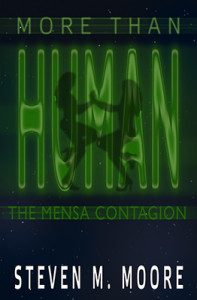
In the “Chaos Chronicles Trilogy,” there are two apocalypses. The first is manmade, a collapse of the social order I named the Chaos. Recovery from that ends when ETs use a bioengineered virus to terraform Earth and remake it to their liking. That involved attempting to eradicate all the planet’s native lifeforms, including humans. Fortunately, the recovery from the Chaos continues on three extrasolar planets colonized by humans. Apocalyptic pandemics also play a role in “The Last Humans” series (see below), although the virus is manmade in that case. In More than Human: The Mensa Contagion, a more benign ET virus creates Homo sapiens version 2.0, so the apocalypse is short-lived and in the end beneficial.
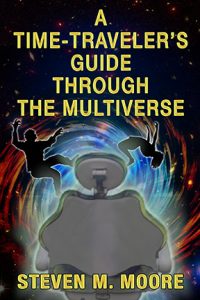
Viral apocalypses aren’t as dramatic as crashing asteroids (the dinosaur’s apocalypse), or a nuclear holocaust, and, in the worst-case scenario, leave no story to tell, unless some ET archaeologists stop by later to wonder, “How did this once robust civilization die?” One needs survivors, and that’s where the individuals come in. There are several types of apocalypses like that describe in A Time Traveler’s Guide through the Multiverse; they are visited by the heroes in that tale.
The quintessential tongue-in-cheek apocalyptic survivor story, though, can be found in C. M. Kornbluth’s novella “The Marching Morons,” where, unlike my More than Human novel, the apocalypse is reverse evolution—most human beings become incredibly stupid with the exception of a few unlucky souls who have to run everything. (This is akin in a way to Brave New World, I suppose, and was uncannily prescient about the Q-Anon movement.)
Above all, apocalyptic visions in the sci-fi literature are excellent warnings. The better the stories are, the better the warnings. Hollywood has poor apocalyptic visions. We’ve lost a lot in going from Huxley and Orwell to that snow train and cowboys destroying killer asteroids. Special effects in a two-hour movie can’t begin to portray realistic apocalypses or probe into characters’ reactions to them. That can only be found in a book.
***
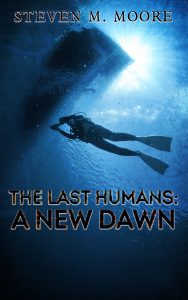
Comments are always welcome.
“The Last Humans” Series. This post-apocalyptic series has been hammered due to the vagaries of modern publishing. The first book, The Last Humans, was published by Black Opal Books, a small press (I think it’s near bankruptcy). In it, Penny Castro survives an apocalypse when a US enemy attacks with a bioengineered virus that works too well, going round the world when the target was only the Pacific Coast of the US. Imagine Covid on steroids! In The Last Humans: A New Dawn, Penny is still in survival mode, but she’s forced to participate in a revenge mission against the country that unleashed the virus. I published that novel with Draft2Digital. In any case, both ebooks are available wherever quality ebooks are sold. (And I might eventually make this a trilogy, especially if Black Opal cancels my contract with them.)
Around the world and to the stars! In libris libertas!
